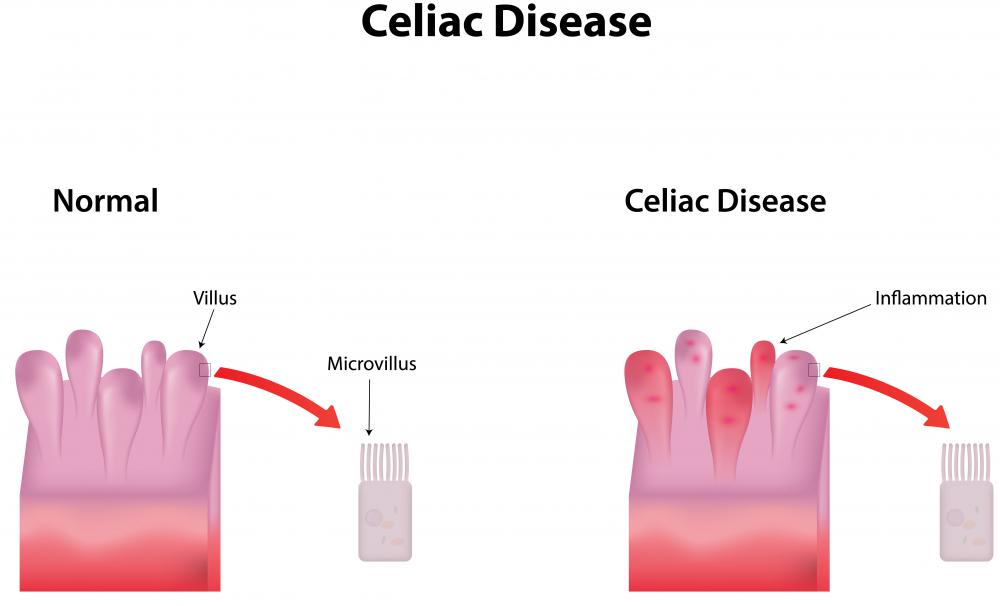At WiseGEEK, we're committed to delivering accurate, trustworthy information. Our expert-authored content is rigorously fact-checked and sourced from credible authorities. Discover how we uphold the highest standards in providing you with reliable knowledge.
What are the Symptoms of Celiac Disease in Children?
Symptoms of celiac disease in children normally include failure to thrive, stomach pain, and abdominal bloating. Irritability, diarrhea, inability to concentrate, as well as vomiting, constipation, and decreased appetite may also occur. These symptoms typically vary from child to child, and it is not uncommon for the problems to come and go. Some children may experience a few weeks without symptoms before they return again. Many children start showing signs of celiac disease shortly after they consume gluten-containing foods for the first time. There are also some who are not born with celiac disease but develop it later in life.
There is no cure for celiac disease in children or adults. The only way to successfully treat it is to avoid foods containing gluten. Most foods with grain also contain gluten, and this could make it difficult to follow a gluten-free diet all the time. Kids may naturally have a hard time understanding why some people can eat certain types of foods and they can't. Parents of children with celiac disease might benefit from putting the entire family on a gluten-free diet to make it easier for the affected child to cope.

Celiac disease in children is more likely to result if there is another family member who has the disease. A family history of celiac disease could increase a person's chance of developing it themselves by as much as 10 percent. There are likely many parents who are not aware that their child has celiac disease because the symptoms tend to be inconsistent and vary so much from person to person. It is estimated that more than one in every 100 people is affected by it. Awareness of celiac disease has grown substantially over the years, and as a result many people are starting to discover that they are affected by it.

The first step in diagnosing celiac disease in children and adults is typically through a blood test screening. This test shows the levels of tissue transglutaminase, or tTG, in the person exhibiting symptoms of celiac disease. If the levels of tTG are elevated, celiac disease is normally suspected. The only way to be 100 percent sure that the symptoms are a result of celiac disease after the blood test results indicate that it may be is through a biopsy of the small intestine. After the procedure, a doctor normally examines the sample specimen of the intestine under a microscope to confirm the disease is present in the patient.
AS FEATURED ON:
AS FEATURED ON:














Discuss this Article
Post your comments